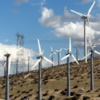SAN FRANCISCO — The Pacific Research Institute, a free market think tank based in San Francisco, released a new report debunking the common myths about energy in America. Top Ten Energy Myths, by Thomas Tanton, senior fellow in Energy Studies, confronts ten popular myths about America’s energy sources, uses, and risks.

The report challenges conventional discourse about energy propagated by politicians, celebrities, and the media. Using data from the U.S. Department of Energy and the Energy Information Administration, Top Ten Energy Myths clearly outlines the types of fuel most used in the U.S.—where they come from, the risks involved, and the potential for alternative technologies.
“Contrary to common belief, new technology has greatly reduced the environmental risk of oil extraction, and renewable energies such as solar and wind will not increase our energy security,” said Mr. Tanton. “There is a plethora of unexplored options for securing energy in America through domestic sources, but misled confidence in renewable technologies and increased efficiency are hampering common-sense energy policy.”
The list of top ten myths in the report are:
- Myth: Most of our energy comes from oil.
- Reality: Oil represents less than 40 percent of our energy use.
- Myth: Most of our oil comes from the Middle East.
- Reality: Two-thirds of our oil comes from North America.
- Myth: We have no choice but to import vast quantities of oil and natural gas.
- Reality: The U.S. could significantly reduce imports by expanding domestic production.
- Myth: Offshore oil production poses environmental risks.
- Reality: New technology has greatly reduced the risk of oil spills. Reducing oil reservoir pressure through extraction of petroleum will decrease the amount of oil pollution from natural seepage.
- Myth: Reducing our petroleum use through alternative energies will increase U.S. energy security.
- Reality: Reducing petroleum use will first reduce domestic production, not production in unstable regions. Renewable technologies are subject to import and price security concerns as well.
- Myth: Energy companies will not invest in clean reliable energy so we need government programs to do so.
- Reality: Energy companies are investing huge sums of money to develop cleaner and more reliable sources of energy.
- Myth: Renewable energies will soon replace most conventional energy sources.
- Reality: While growing fast in percentage terms, renewable energies are a very small fraction of our energy mix and will remain so for the foreseeable future.
- Myth: The U.S. consumes large amounts of energy and thus emits a disproportionate amount of the world’s greenhouse gases.
- Reality: The U.S. uses energy and emits a large portion of the world’s emissions because it produces a large portion of the world’s goods and services.
- Myth: Federal mandates for higher-mileage cars means less energy consumption.
- Reality: Increased energy efficiency leads to increased energy use.
- Myth: Forcing drivers to use alternative fuels will help solve global warming.
- Reality: Alternative fuels do not necessarily result in lower greenhouse gas emissions.
“Energy policy must be based on facts, not myths,” said Mr. Tanton. “If based on myths, energy policy could easily curtail our energy supply, drive up prices, and even increase pollution, all without an increase in energy security.”
“If our goal is to lower prices, trim emissions and sustain access to energy, then policy makers, the media, and the public should reject energy myths and stick to the path of facts and reality,” concluded Mr. Tanton.
Top Ten Energy Myths
Thomas Tanton
SAN FRANCISCO — The Pacific Research Institute, a free market think tank based in San Francisco, released a new report debunking the common myths about energy in America. Top Ten Energy Myths, by Thomas Tanton, senior fellow in Energy Studies, confronts ten popular myths about America’s energy sources, uses, and risks.
The report challenges conventional discourse about energy propagated by politicians, celebrities, and the media. Using data from the U.S. Department of Energy and the Energy Information Administration, Top Ten Energy Myths clearly outlines the types of fuel most used in the U.S.—where they come from, the risks involved, and the potential for alternative technologies.
“Contrary to common belief, new technology has greatly reduced the environmental risk of oil extraction, and renewable energies such as solar and wind will not increase our energy security,” said Mr. Tanton. “There is a plethora of unexplored options for securing energy in America through domestic sources, but misled confidence in renewable technologies and increased efficiency are hampering common-sense energy policy.”
The list of top ten myths in the report are:
“Energy policy must be based on facts, not myths,” said Mr. Tanton. “If based on myths, energy policy could easily curtail our energy supply, drive up prices, and even increase pollution, all without an increase in energy security.”
“If our goal is to lower prices, trim emissions and sustain access to energy, then policy makers, the media, and the public should reject energy myths and stick to the path of facts and reality,” concluded Mr. Tanton.
Nothing contained in this blog is to be construed as necessarily reflecting the views of the Pacific Research Institute or as an attempt to thwart or aid the passage of any legislation.